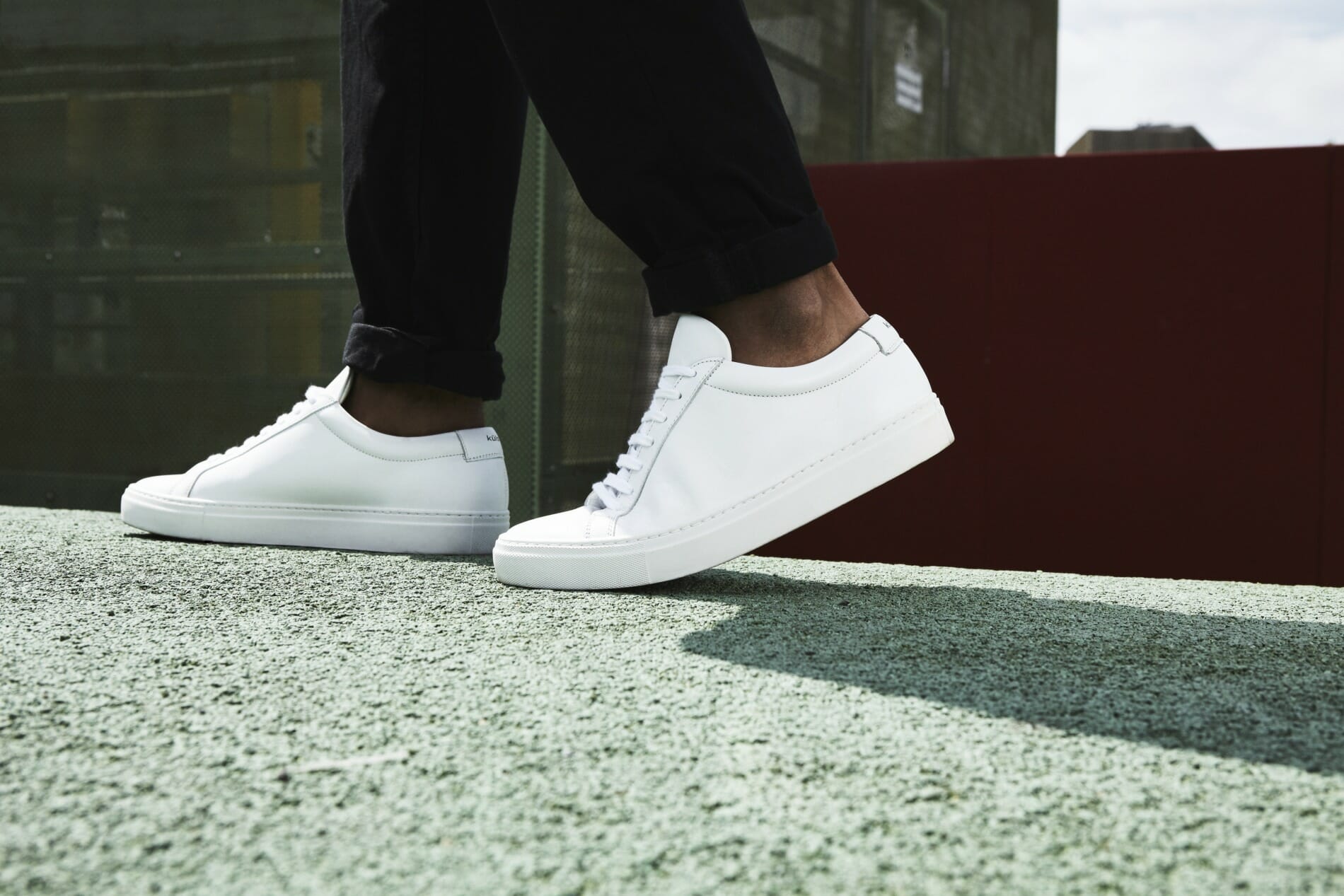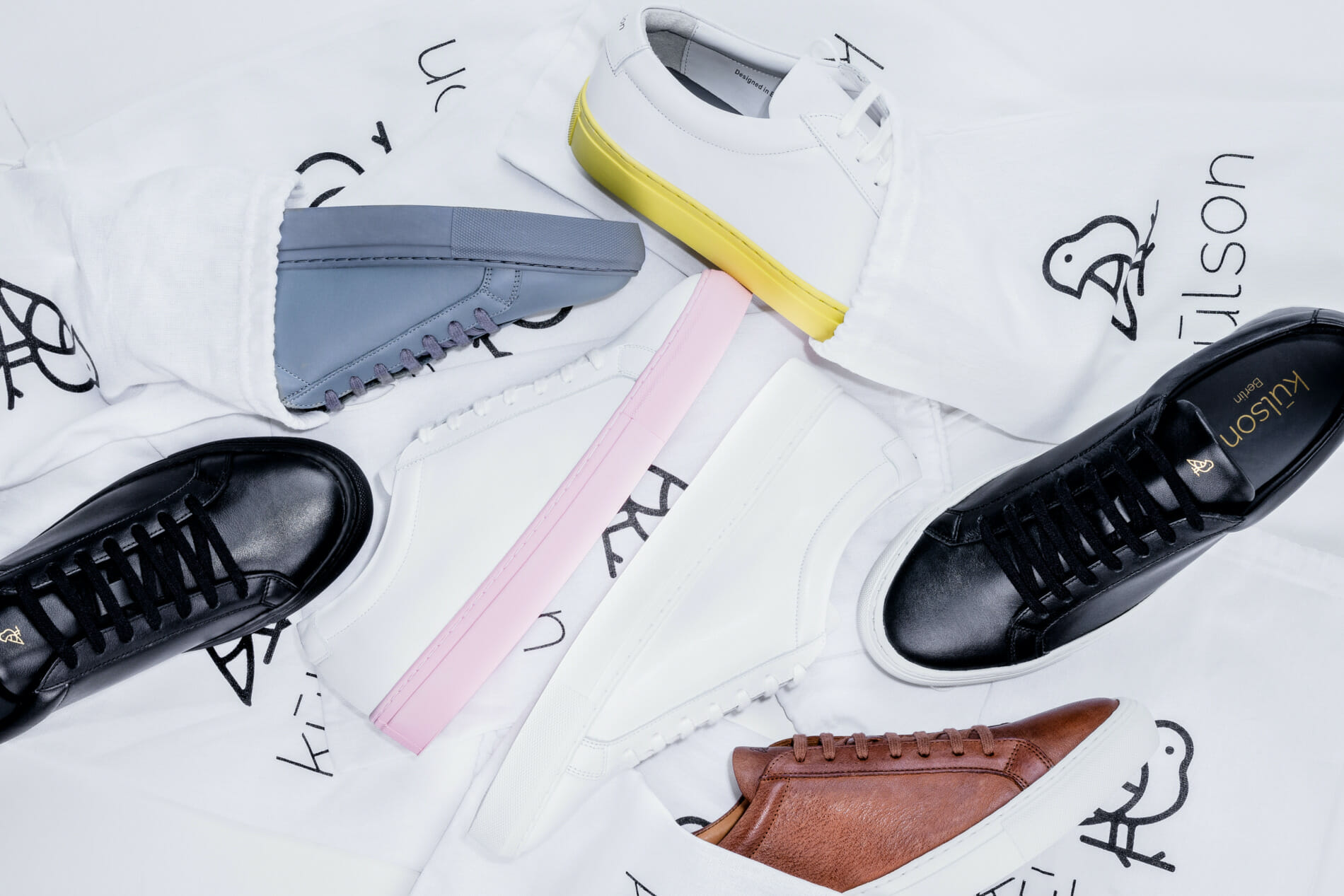Fed up with the monotony of the commercial sneaker scene, Benjamin Hoffman co-founded Berlin-based luxury sneaker label, Kulson, four years ago. Handmade in Portugal with eco-friendly materials sourced entirely from the EU, Kulson is a sustainable alternative to big sports brands that doesn’t compromise on style or comfort. We spoke to Benjamin about the challenges of navigating the sustainability industry as a young and small brand and the changes he thinks could help level the playing field.
What was the inspiration for starting your own sneaker brand?
I wasn’t happy with the market offering four years ago. I felt it was always the same players offering the same products in a ten year loop, which was boring and for sure not sustainable. Tired of wearing the same sneakers from the same big brands year after year, we decided to design the perfect sneaker for ourselves and hoped that other people would think it was the perfect sneaker for them too.
You went through 22 prototypes in two years – what factors ultimately determined the design of a Kulson sneaker?
It was very important that the overall design was minimalistic but still eye-catching. When we started we only had one model, the full white sneaker. The concept worked and although it was simple, it was an eyecatcher. We’re thriving for timeless designs, we’re not interested in short-term trends that come and go.
We like linear proportions and knew that we wanted them to be unisex, since we don’t think sneakers should be limited to a specific gender. We also wanted our sneakers to be suitable for almost any outfit – something that can upgrade a look, whether it’s a suit, a pair of jeans, or some sweatpants.
Since we’re in the luxury segment, it needed to be chic but also casual and cool, and of course it needed to be comfortable! At the moment we have ten different models, and we’re about to launch the eleventh very soon.

What makes Kulson sneakers sustainable?
We have a very close relationship with our supply partners, otherwise it would be very difficult to have oversight on everything. We visit our producers in Portugal on a regular basis and we only work with certified materials sourced from within the European Union. We also look for the shortest transport routes to minimize our carbon footprint. Our soles are made from 70 percent recycled rubber.
We work with leather, although we are constantly looking for new materials and better alternatives, but it’s not as easy as it looks. There are some leather alternatives out there, but we’re not convinced by their durability or their look and it just doesn’t make sense to have to throw a sneaker away after a year because it didn’t last. This is the case with many leather alternatives. Others are mixed with plastic to guarantee certain physical aspects and rigidity, but we don’t want to work with those materials either.
Our leather is sourced from Italy, it’s the only material that we don’t get from Portugal. It’s also Blauer Engel certified, a big environmental label here in Germany. It guarantees that there were no toxic chemicals used in the tanning process, and that the leather is a byproduct of the beef industry, so the animal is not killed solely for its hide. But we are always looking for alternatives, and soon we hope we will be able to say goodbye to leather for good.
Four percent of your profit goes towards efforts to clean up ocean plastic. Can you talk to us about the partners you work with here and why you chose to support this particular environmental initiative?
We’ve worked with Sea Shepherds, The Ocean Cleanup, and The Great Bubble Barrier, which is a really cool solution from the Netherlands that uses tubes to create air bubbles that trap and extract plastic trash from waterways. We’re also a member of 1% For The Planet, which is a huge organization. To be a member you have to donate at least one percent of your sales, which goes towards supporting various environmental causes. We also support Healthy Seas to remove lost fishing nets from the ocean.
We choose a different organization to support every year so we’re always looking for organizations that are doing innovative things and are doing them well. The most important thing is that they are not doing it for profit, but for the good of the project itself, and that they are not out there trying to sell a product.

What were some of the key learnings from your own path to sustainability and what are some of the future challenges you anticipate as the fashion industry responds to the greater demand for sustainable products.
That being sustainable comes at a price for both sides: for the consumers, who pay a higher price for the product, but also the producers, for whom creating it is a cost intensive process. This shouldn’t be a negative though. The higher price is only in monetary terms; in the greater scheme of things, buying from a sustainable brand is always a better deal, even if you have to reach deeper into your pockets.
You also have to look behind the scenes, not everything is as green as it seems. It’s expensive and not very easy for smaller and younger companies to get all the labels and certifications, compared to bigger players who have the resources to collect them all. The small players, who are often far more sustainable, are left behind. So labels are not all that they seem to be as well, and I think there’s a real need for more regulation to make sure that the system is fair, so that in five years it isn’t totally co-opted by bigger, more powerful businesses.
It’s a question of power and of your market position as a small player in relation to your producer, who can always drop you if you get on their nerves or if you don’t have a good relationship.
It will only get more difficult the more vertical integration is happening on the market – so the bigger the big players get, the more difficult it will be for small labels. It’s important to create environmental and ethical labels in a way that is accessible to everyone, not only the big players.
Where would you like to see the industry go in the next five years and how does Kulson fit into that vision of the future?
There’s been tremendous change over the last three years across all industries with regards to sustainability. I hope that in five years there will be no way around it anymore and that everyone will include aspects of sustainability in their business model. I also want to see supporting good causes become an industry standard. It’s so easy to do. We give four percent of our profits, it doesn’t sound like a lot, but it is. Imagine what could be achieved if everyone did the same.
I’d also like to see good alternatives for leather on the market that are durable, comfortable, and also accessible for everyone. I’d love for there to be better recycling possibilities and for more materials to be recyclable. Everyone wants recycled components but no one wants to pay a premium for them, so it would be great to see more material innovations that can bring these prices down.
Editor’s Note: The opinions expressed here by Impakter.com columnists are their own, not those of Impakter.com. — In the Featured Photo: Kulson co-founder, Benjamin Hoffman. Featured Photo Credit: Benjamin Hoffman.










